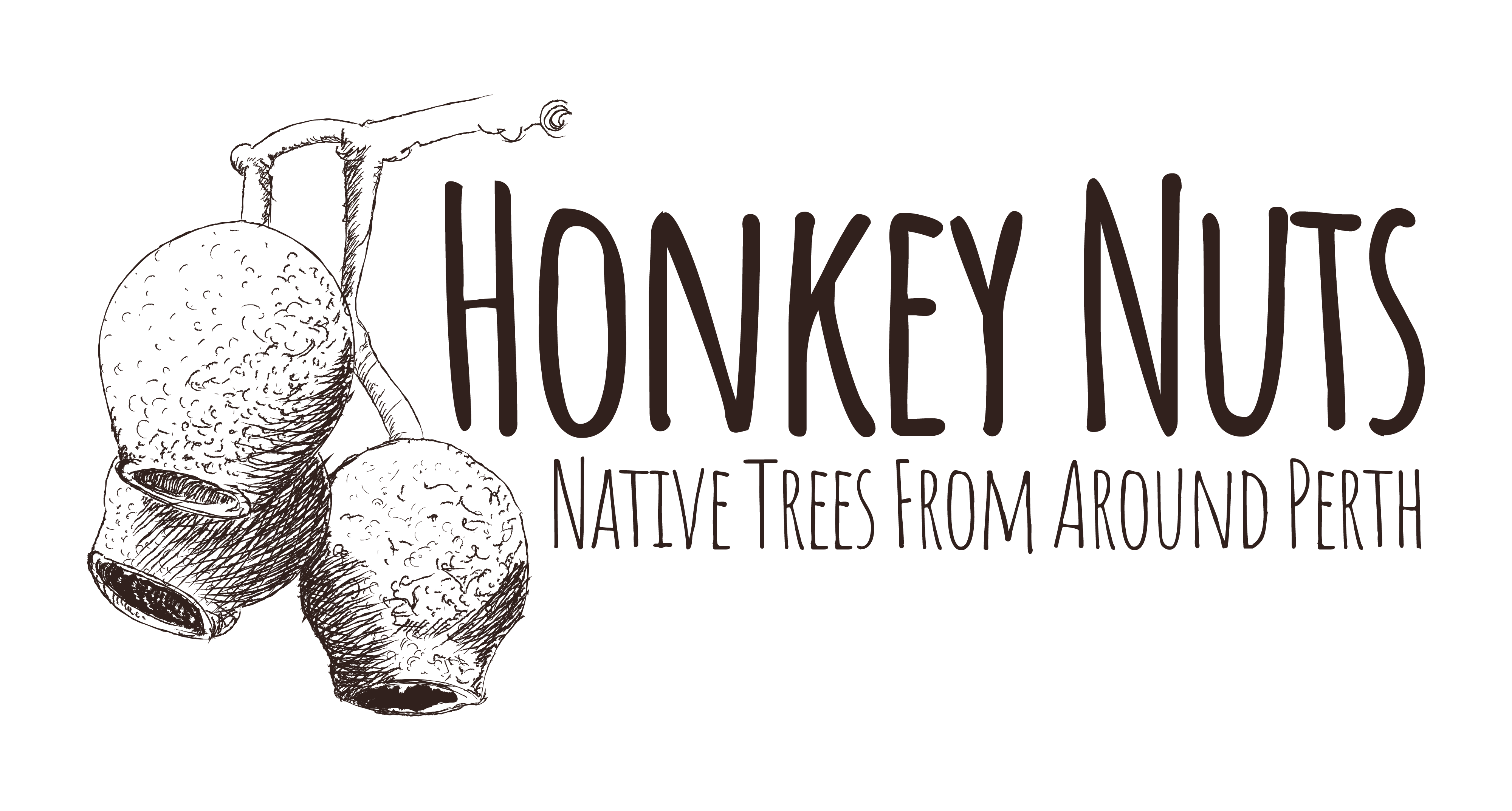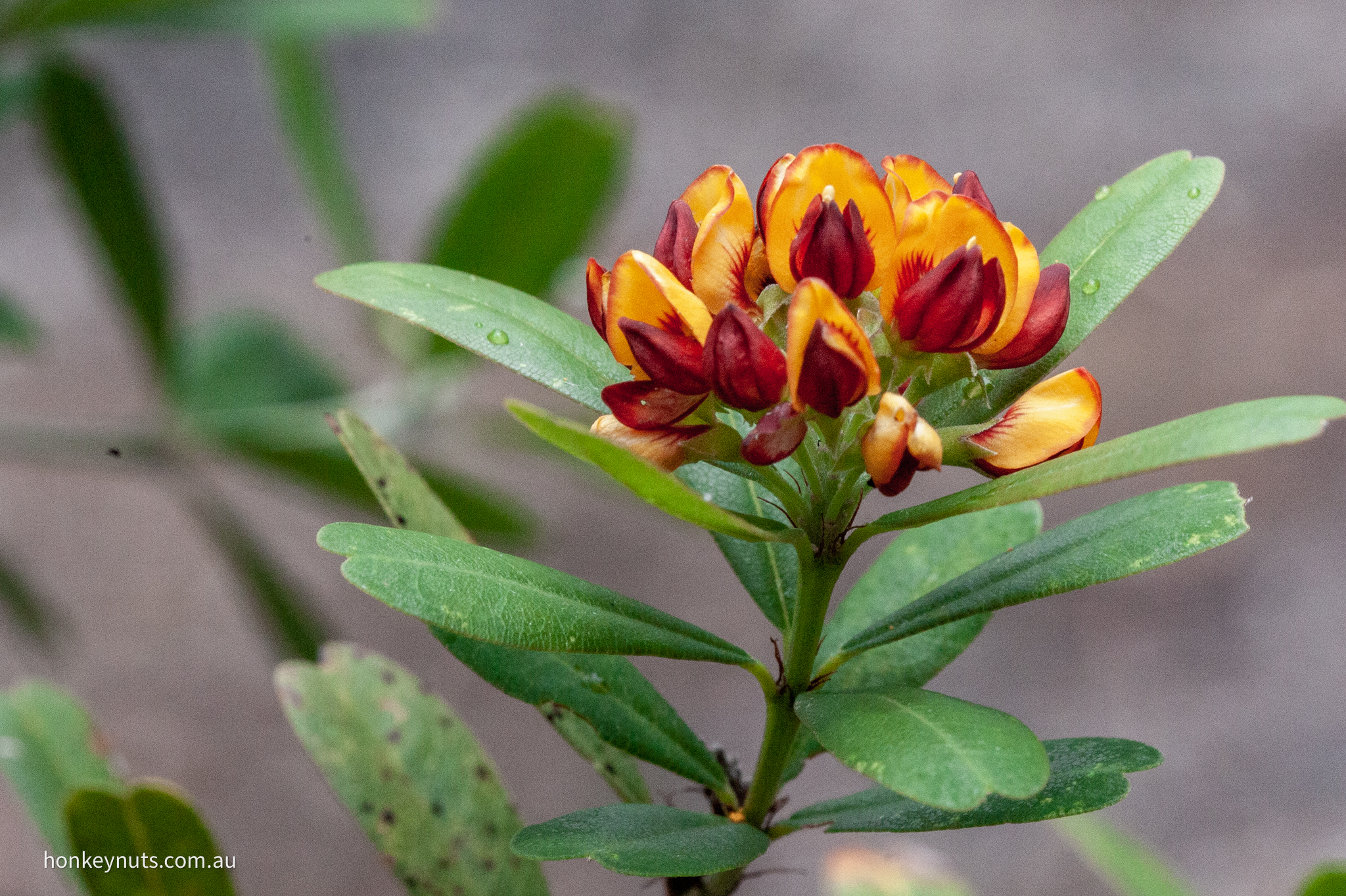Heart-leaf poison is an erect, succulent shrub which grows up to 4 m tall, in valleys or near granite rocks in the Darling Range. Pea-shaped yellow/orange flowers with red markings are produced in Spring. The species name comes from the Latin bi “two” and lobus “lobe” and refers to the leaves.
Many species in the Gastrolobium genus produce a poison and heart-leaf poison is one of the most toxic. Fluoroacetate, found in the leaves, flowers, seeds and wood, disrupts the energy producing tricarboxylic acid (TCA) cycle in the mitochondria of grazing animals. Whereas many native animals have developed tolerance to fluoroacetate, introduced species are highly sensitive to poisoning. Synthetically produced fluoroacetate is the active ingredient in 1080 baits for the control of rabbits, foxes, wild dogs and others. It is toxic to humans.
Ref:
“Leaf and branch: trees and tall shrubs of Perth” by Robert Powell. Published by the Western Australian Department of Environment and Conservation, 2009
Code of practice for the safe use and management of 1080 in Western Australia. August 2010. Department of Health, Department of Agriculture and Food, Department of Environment and Conservation.

